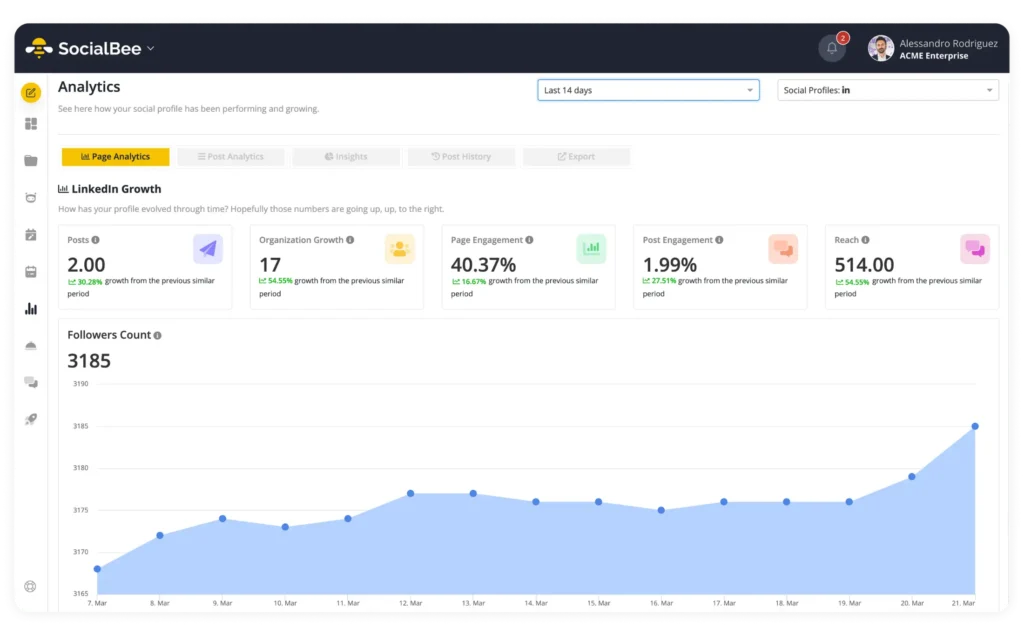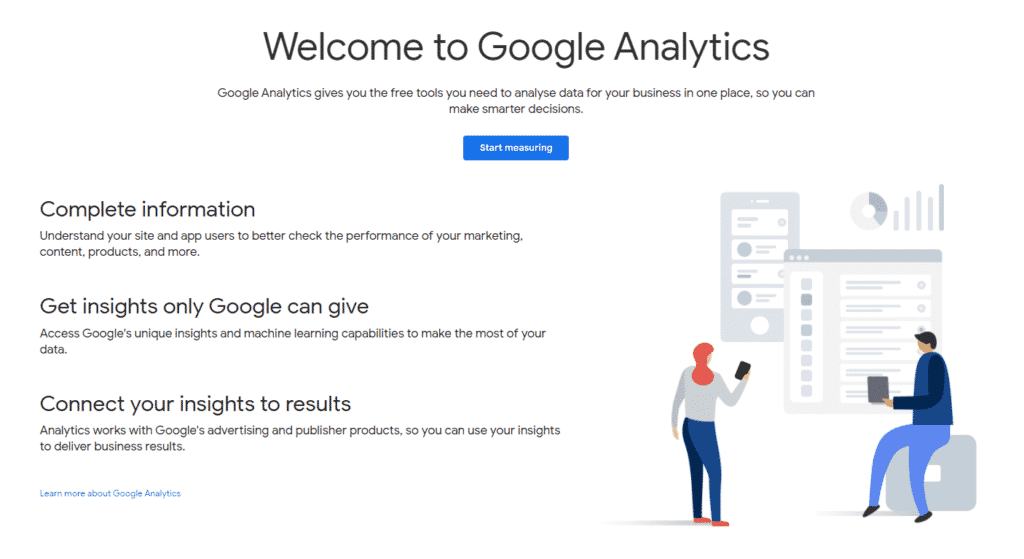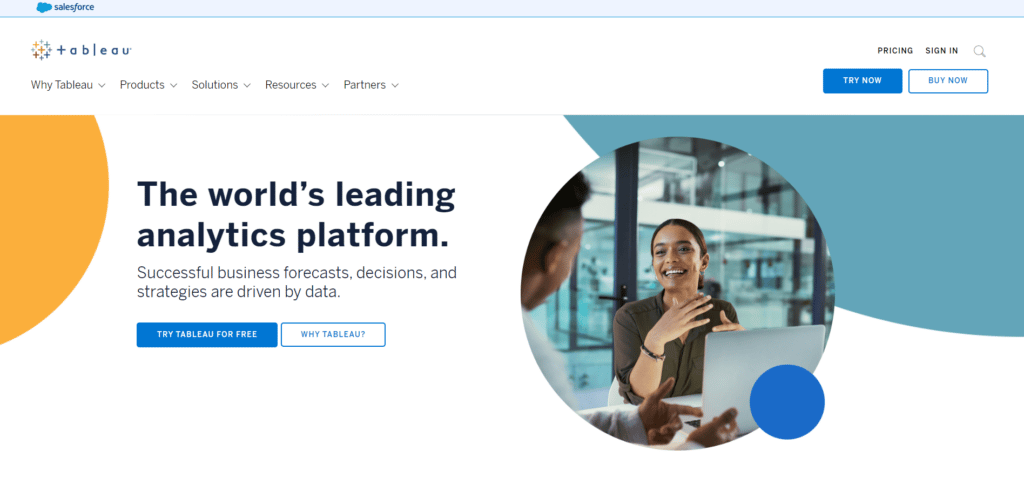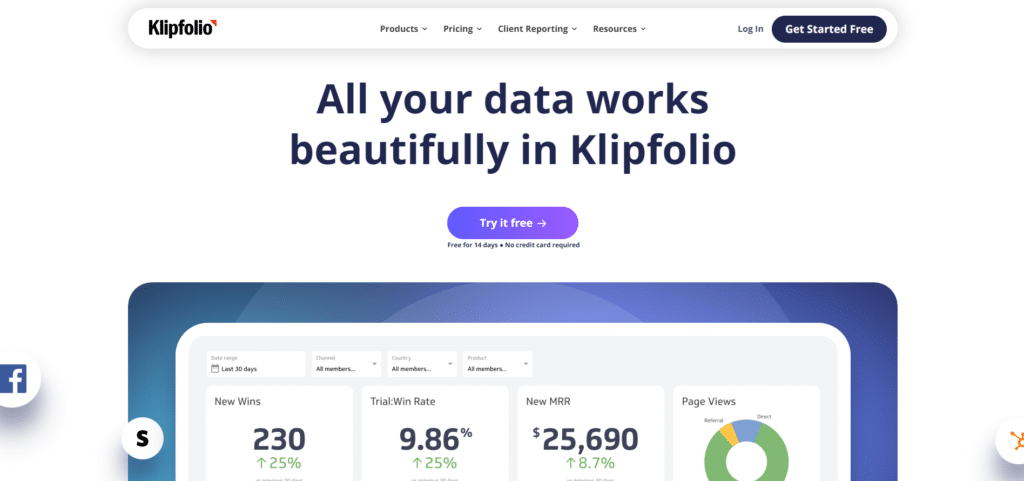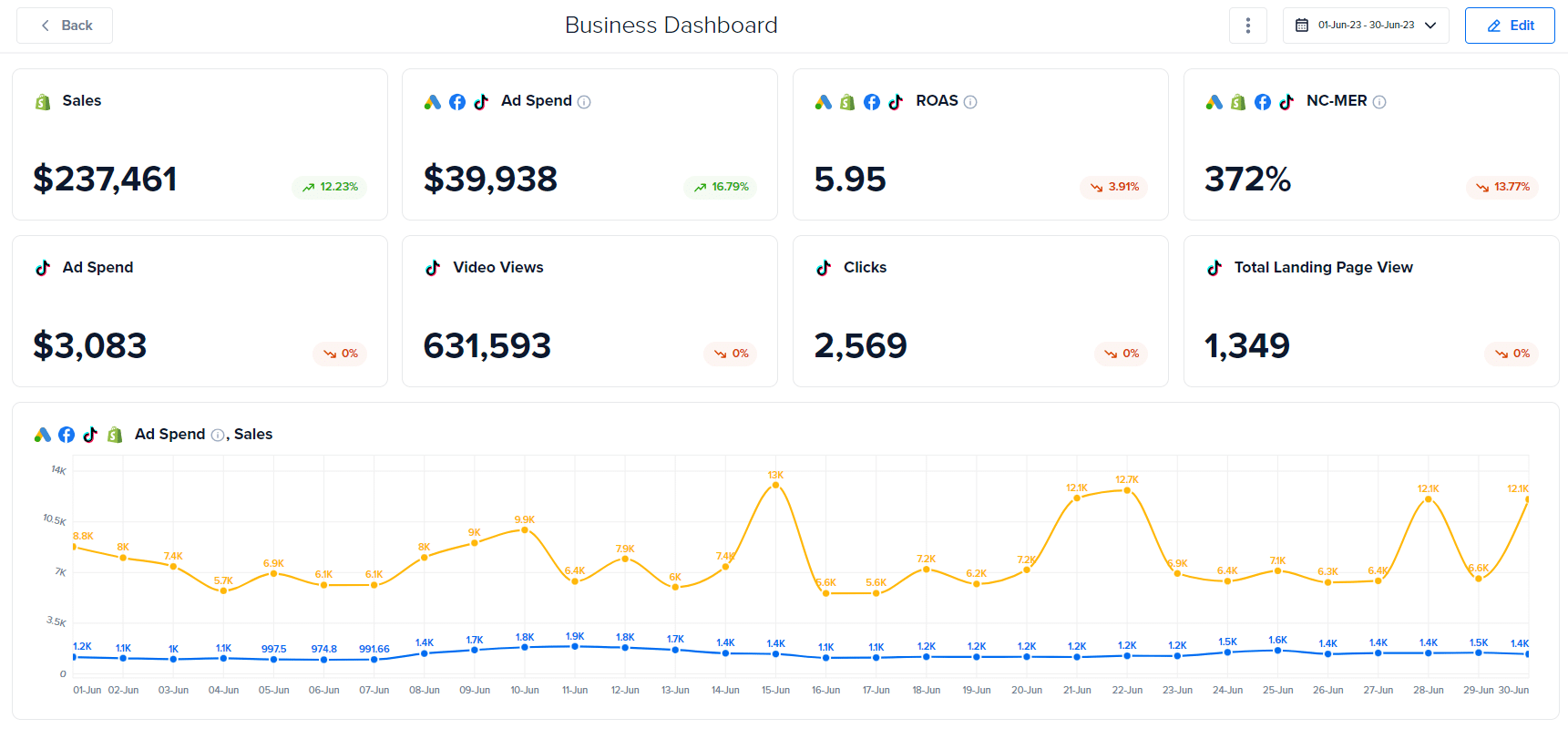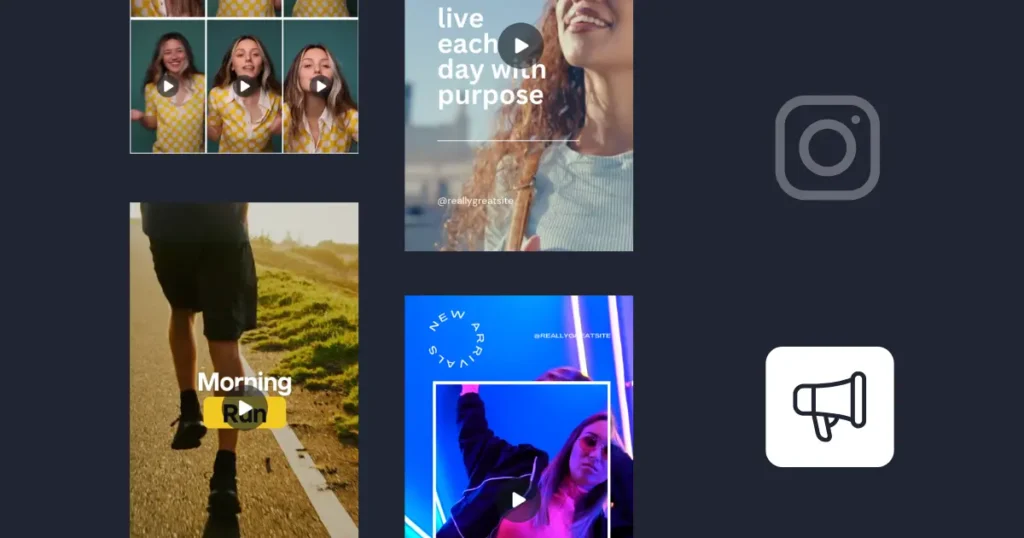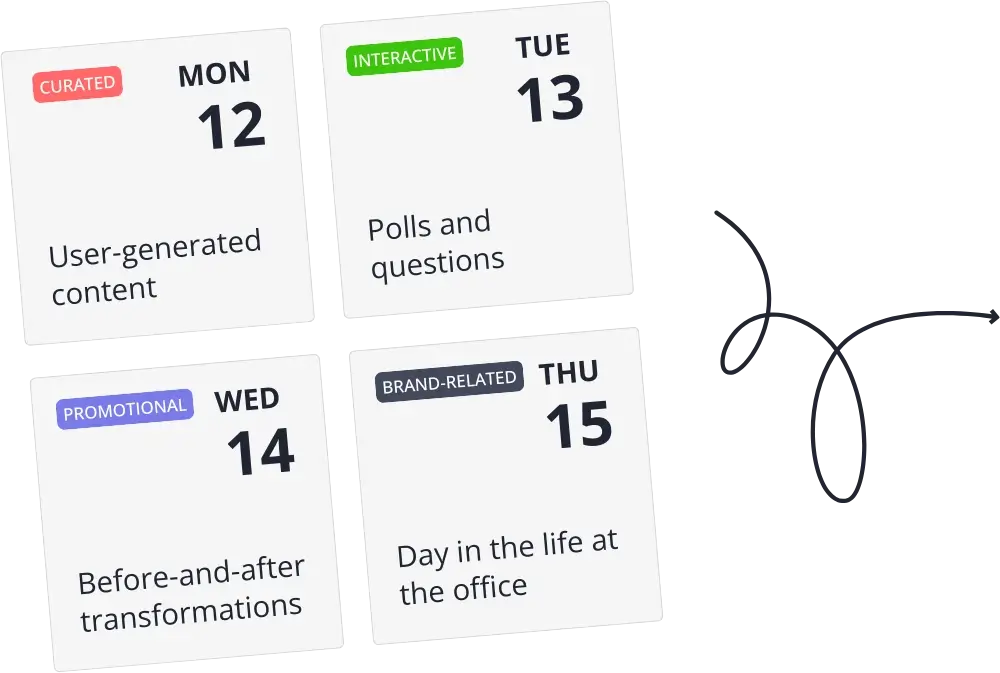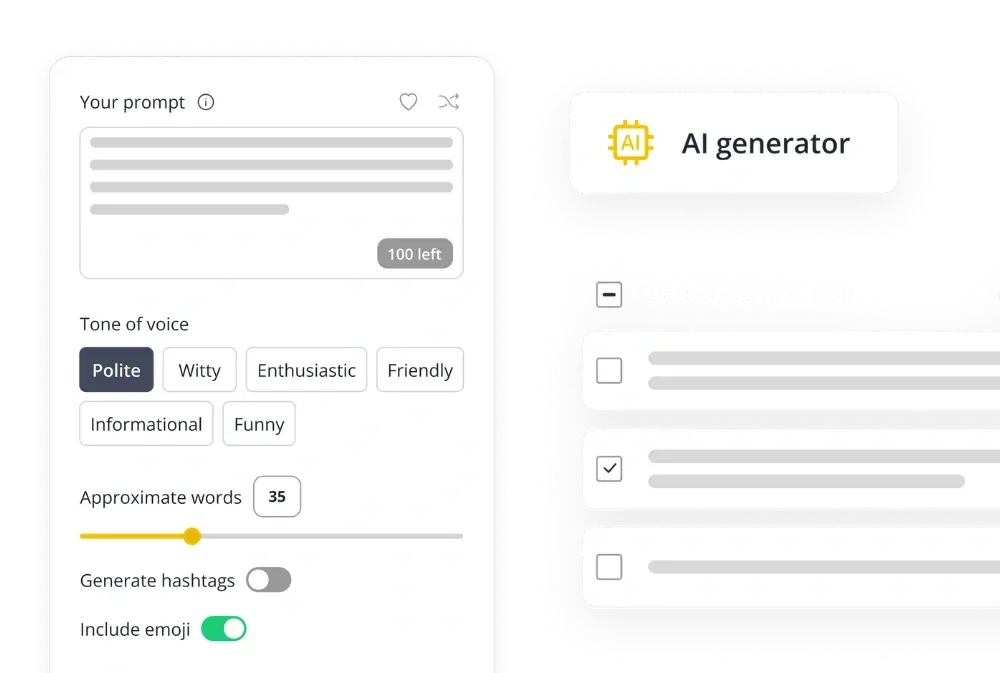
Content Writer
Did you know that client reporting is a must-have component that can take your agency-client relationships to the next level?
The reporting process allows everyone to take note of the progress that’s being made and become fully aware of what could use some improvement. Additionally, it’s a great way to show transparency and build trust between clients and agencies.
In this article, we’ll explore the top 10 tips for creating better reports and improving your client management efforts. By putting our tips to the test, you’ll be able to provide the latest analytics data quickly and easily keep your clients informed about the status of their project or investment.
Let’s get started!
We’re SocialBee LABS SRL, part of WebPros. We use the information you provide to share relevant content and product updates, as outlined in our Privacy Policy. You can opt out anytime.
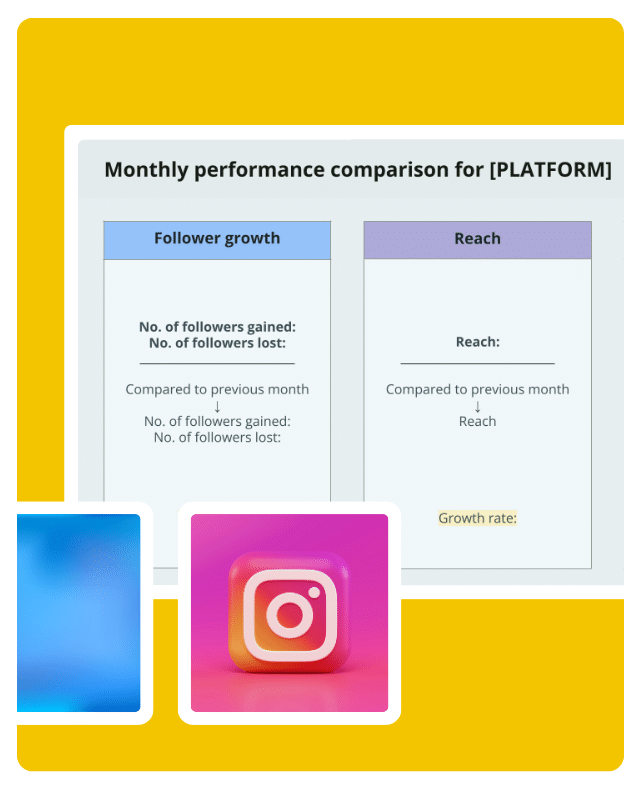
What Is a Client Report?
A client report is an essential document for service providers or agencies. A report usually outlines the activities, progress, and results of the work that has been completed for a client.
Custom reports should typically contain details in regard to project objectives, services provided, strategies used to reach those business objectives, and any other relevant information.
The client report should also include important metrics that can clearly showcase how successful the strategies have been in achieving the desired outcomes of the client.
In addition to helping clients understand the ROI of their investment, this document holds agencies accountable for delivering quality services and projects.
Creating client reports can be quite a time-consuming process. However, using detailed reporting is mandatory when ensuring that the client’s business is thriving.
10 Tips to Improve Your Client Reporting Process
It’s important to come up with innovative ways to enhance your reports. In case you’re experiencing a lack of ideas, try not to worry too much. We’ve got your back!
Here are 10 tips to improve your client reporting process:
- Start by sending a client questionnaire
- Invest in client reporting software
- Establish key performance indicators
- Provide monthly reports
- Create cross-channel marketing reports
- Focus on your progress
- Be honest and transparent
- Keep your client reports simple
- Engage clients visually
- Include actionable recommendations
1. Start by Sending a Client Questionnaire
A client questionnaire is a set of questions designed to gather information about a new client. A questionnaire should include relevant data about their target audience, needs, goals, and expectations.
Professionals typically use it to better understand their clients’ needs and tailor their offerings accordingly.
Here are three possible questions that could be included in a client questionnaire:
- What are your main goals for this project?
- What are the three main challenges you expect to face during the course of this project?
- What is your budget for this project?
2. Invest in Client Reporting Software
Investing in a client reporting tool will prove useful, both in the short and long-term. In fact, automated client reporting allows any marketing agency to quickly deliver value through useful insights about client performance.
Compared to manual reporting, such software can streamline your efforts and help you tend to many clients with less effort. The agency-client relationship will also experience a positive boost.
Best Client Reporting Tools
Ready to become a master of client reporting? If so, you’re in luck because we’ve gathered some of the best client reporting tools out there. They are guaranteed to streamline most of your work processes and allow you to develop a productive and profitable relationship with your clients.
Here are the best five client reporting tools:
- SocialBee
- Google Analytics
- Ahrefs
- Tableau
- Klipfolio
- Madgicx
I. SocialBee
SocialBee is an all-in-one tool that enables you to create, schedule, publish, and monitor your content, all from a single platform. Marketing professionals will find that SocialBee excels in the long run and helps you do client reporting without any effort whatsoever.
With SocialBee, you can monitor your social media progress by accessing all your social media analytics from one dashboard, allowing you to track your progress and identify key areas to focus on.
SocialBee takes the power of automated client reporting to the next level by generating PDF reports for each of your clients in a matter of seconds.
Provide your clients with data-driven insights into your social media marketing efforts using SocialBee’s reporting capabilities.
Start your 14-day free trial today!
Here are three monitoring functionalities provided by SocialBee:
- Engagement & Reach — Track and share the overall performance of your clients’ content with SocialBee. What does engagement look like during a particular month? What about reach, has it improved lately?
- Audience Growth — How many followers did your clients gain or lost recently? This could be a clear indication about the efficiency of your current strategy. Then, leverage the power of demographics by identifying the audience’s language, age, and more.
- Post History — SocialBee cares about your content performance. Easily access a timeline of your client’s past posts and gain insight into the effectiveness of your current content strategy.

Generate Social Media PDF Reports for Your Clients with SocialBee!
II. Google Analytics
Google Analytics is a free web analytics service provided by Google that enables marketers to track and analyze the performance of their clients’ websites and digital marketing campaigns.
Google Analytics also provides information on a number of metrics, including visitors, pageviews, bounce rate, average session duration, conversion rate, as well as demographics, user behavior, and traffic sources.
III. Ahrefs
Ahrefs is a popular Search Engine Optimization (SEO) tool that provides website owners, marketers, and SEO professionals with an impressive variety of tools that can analyze and improve their website’s search engine rankings.
It offers features such as site audits, backlink analysis, competitor research, keyword research, and rank tracking.
IV. Tableau
Tableau is an analytics platform that allows users to see, understand, and share data in a visual way.
It provides a user-friendly drag-and-drop editor to create interactive dashboards, charts, and reports, without requiring extensive coding or technical knowledge. Tableau is also AI-powered.
V. Klipfolio
Klipfolio is a dashboarding and data analytics platform that allows users to connect to multiple data sources, create custom data dashboards, and share insights with others.
It supports a wide range of data sources, from spreadsheets and cloud-based databases to social media platforms and marketing automation tools.
VI. Madgicx
Madgicx’s One-Click Report allows users to create cross-channel reports in just a few clicks for Meta (Facebook+Instagram), Google, TikTok, and Shopify, all in one place. It also lets them add unlimited channels and accounts to their reports.
One-Click Report boasts 15 pre-made templates, which are all fully customizable using an intuitive drag-and-drop editor. Moreover, it also allows users to create their own reports from scratch.
All the reports can be shared using a public link or by downloading them as PDF files. The public link allows anyone to view the report in real time – even if they have no Madgicx account. This is especially useful for sharing reports with clients, teammates, and managers.
3. Establish Key Performance Indicators
When creating client reports, you need to decide which Key Performance Indicators (KPIs) to include in your client reports. The client questionnaire should come in handy here.
As you might’ve already known, KPIs are measurable values that show you how well your project is performing.
Here are some examples of common KPIs:
Return on investment
| The profit you make compared to the money invested in marketing. |
Return on ad spend | The generated profit for every dollar spent on advertising. |
Customer acquisition cost | The financial resources you need to spend to turn a lead into a customer. |
Marketing qualified leads | A lead that has engaged with your business and has the potential to become a serious prospect. |
Sales qualified leads | A serious prospect that is ready to make a purchase. |
Conversion rate | The number of visitors that performed the desired action.
|
Website visitors | The number of people that visited your website. |
Referral traffic
| The source of your website visitors. |
Social media engagement | The number of likes/comments/shares/mentions on social media. |
Follower growth | The number of new followers you gain on social media. |
Net promoter score
| Customer satisfaction |
Organic traffic | The free traffic you get on your website from search engines. |
Customer retention | The ability to retain a customer over a period of time. |
The lifetime value of a customer | The total amount of profit a business can make from just one customer. |
Average order value (AOV) | The amount of cash your average customer spends on each order. |
4. Provide Monthly Reports
With the assistance of automated client reporting, you can provide regular client reports and ensure that your clients remain updated and informed about the work that’s been done. Truth be told, having a strict reporting schedule can reduce a lot of effort in your quest to provide value to your existing clients.
Monthly automated reports detail the value of your services and show how well you have been able to address client problems or concerns. This helps build trust between client and provider and helps you update your current marketing strategies.
Furthermore, doing periodic reporting also boosts client success, since you’re consistently presenting evidence about which strategies are working and which ones need improvement. Also, make sure to check with your clients on how often they would prefer to receive reports.
5. Create Cross-Channel Marketing Reports
To enhance client reports further, incorporating efficient data transformation tools is key. These ensure the accurate and insightful presentation of data across various marketing channels, enriching client presentations and supporting better decision-making.
Cross-channel marketing reports are documents that provide an overview of your client’s performance across multiple platforms.
These reports include the performance of email marketing, mobile apps, and client-focused reporting on SEO, PPC, or social media in a way that shows you how conversions take place. The customer journey doesn’t have to be a mystery anymore.
We recommend that you create this type of reports because they show the effectiveness of each channel you’re currently using.
6. Focus on Your Progress
Any client celebrates the smallest progress. Make sure that they are always kept in the loop about any relevant wins. It’s important to closely monitor it so that your client’s expectations can be met. In just a few minutes, you can check your reporting dashboard and assess what’s working and what isn’t.
Here are three examples of progress worth sharing with a client:
- Increased website traffic – An increase in website traffic or page views should not be so easily dismissed. Take the time to share the progress with your client by sharing periodic reports about their website with them.
- Conversion rate optimization – Better conversions means more sales. More sales? More chances of becoming profitable.
- Conversion rate improvement – Better conversions means more sales. More sales? More chances of becoming profitable. Show that you’ve been working on conversion optimization strategies by sharing progress in the form of improved conversion rates.
- Cost savings – Cost-saving measures, such as reducing ad spend or optimizing a process can both impact the amount of money saved. Let your client know that you care about how wisely they invest their hard-earned resources.
7. Be Honest and Transparent
When one of your main goals is to be transparent with your client, that means you’re doing digital marketing right.
Here are some tips to help you become more transparent:
- Define goals and expectations – Decide which metrics, KPIs, and benchmarks you will use to measure success and progress and ensure your client is on board.
- Communicate progress updates – Keep your client informed about progress throughout the project. This can be done through regular meetings, phone calls with a business phone number or email updates.
- Support your reporting with data – Use compelling and actionable data to provide evidence and insights to support your reporting. Data visualization and plain language should help your client understand what the data means.
8. Keep Your Client Reports Simple
Complicated report templates are a definitive no-go. Let’s face it, there aren’t many clients who are willing to go past a learning curve when they’re impatient about exploring their analytics.
Here are some tips you can follow to keep reporting simple:
- Focus on crucial information – Only include information that is relevant to the client and the goals of the project. It would be a bad idea to overwhelm them with too much data or overly-technical details.
- Summarize the key points – Use automated client reporting to provide clients with a clear summary of the key takeaways, such as changes in performance or progress toward various objectives. This helps to make the report more easily digestible.
- Use plain language – Avoid using technical jargon or complex terminology. The client reporting software you use should also prioritize this. Use regular language and avoid unnecessary abbreviations that can leave clients scratching their heads.
9. Engage Clients Visually
Visual data will always get a data point across much more effectively when compared to overly detailed reports. Creating reports that feature graphs, charts, and tables to convey information visually is the best decision.
Visual aids can help to simplify complex data and make it easier and more exciting for clients to understand. Be on the same page with your clients by making complex concepts easier to understand. This way, you’ll allow the client to understand your point without having to read through long explanations.
If you can, try to use interactive infographics or dashboards that allow clients to explore the data more deeply. Additionally, by making client reports visually appealing, you increase their chances of being read in full by your client.
10. Include Actionable Recommendations
Any problem, no matter how small, can be nerve-wracking without having a recommended course of action to lean on. One of the best reporting practices you can implement is to share actionable and comprehensive recommendations with your clients.
Here are three examples of actionable recommendations for a client:
- Optimize for target keywords – Chances are that your client’s website is not ranking well for important keywords. In that case, make sure to provide recommendations for optimizing their website content, including adding targeted keywords to meta descriptions, headers, and body text.
- Boost social media engagement – Work with the client to increase engagement on social media channels, including creating more visual content or organizing social media contests and giveaways when possible.
- Improve website UX – In case the client’s website experiences a high bounce rate or low conversion rate, suggest ways to enhance website usability including streamlining navigation, enhancing website speed, and optimizing the checkout process.
Why Is It Important to Create Client Reports?
Creating client reports can be overwhelming, especially when you don’t really understand why they’re a necessary part of the overall relationship.
Here are the five reasons why creating client reports is important:
- Improves client communication and provides transparency
- Keeps both parties accountable
- Tracks performance and informs your strategy
- Manages expectations
- Reduces churn and improves client retention
1. Improves Client Communication and Provides Transparency
Client reports can improve client communication and provide transparency mainly by building trust. Always keep your clients informed about progress, challenges, and outcomes. This helps to form a strong connection between the client and the service provider.
2. Keeps Both Parties Accountable
You can keep yourself and your client accountable by consistently encouraging feedback and collaboration. That way, if someone wishes to implement a big idea, they should also keep their word.
Client reports can help both parties set expectations, establish goals, and track progress. This means that if there are any delays or issues, they can be addressed quickly and efficiently.
3. Tracks Performance and Informs Your Strategy
A client report can highlight the performance in a variety of areas, allowing service providers to capitalize on these successes and adjust their strategy to amplify positive results.
To inform your current strategy, you can confidently highlight where you’re currently falling short and promptly identify the areas where improvement might be needed. That way, you can adjust the approach accordingly and accomplish your monthly marketing goals.
4. Manages Expectations
It’s important to set expectations right from the beginning of your collaboration. Service providers can establish explicit expectations for progress and results, and exhibit their dedication toward achieving objectives by issuing routine client reports.
5. Reduces Churn and Improves Client Retention
Client reports can be a powerful tool for reducing churn and improving client retention. They can demonstrate the value of the service provider’s work, highlighting progress and outcomes achieved.
Consequently, this can help clients understand the value of the service and feel more committed to continuing the engagement.
Also, reports can help clients feel more invested in the project by highlighting progress and success across several marketing channels. This can help them see for themselves that the service provider is making a positive impact on their business.
Frequently Asked Questions
A client report should include information that is relevant to the client’s goals and the service being provided, as well as any recommendations or next steps.
Here are some types of information that should be included in a client report:
- Performance metrics
- Goals and objectives
- Challenges and opportunities
- Recommendations
- Action plan
The regularity of client reports can fluctuate based on project type and client inclination. Nonetheless, it’s advisable to generate monthly client reports, especially for ongoing projects. Certain clients may favor weekly or bi-weekly reports, whereas others may opt for quarterly or yearly reports.
It’s important to determine the optimal frequency for client reports by discussing with the client and understanding their needs and preferences.
Marketing agencies should deliver client reports that are tailored to the specific needs and goals of their clients. However, there are some types of client reports that marketing agencies commonly deliver.
Here are some examples of client report types:
- Campaign performance reports
- Website analytics reports
- Social media reports
- SEO reports
- Competitive analysis reports
The best format for client reports will depend on the specific needs of the client, the nature of the project, and the type of data being presented. However, you should always keep it simple and visually appealing by using file formats such as PDF, Excel sheets, or Powerpoint presentations.
Client reports often contain sensitive and confidential data, so it’s important to ensure they are delivered securely.
Here are some ways to securely deliver client reports:
- Use password-protected PDFs
- Use encrypted email
- Use a secure file-sharing service
- Use a secure client portal
- Consider physical delivery
Improve Your Client Reporting Today
The conclusion is that client reporting is an important part of any client-business relationship.
It allows businesses to communicate with their clients effectively and accurately, while providing them with the necessary insights they need to make decisions. By following our best practices, businesses can maximize their client reporting efforts and build stronger relationships with their clients.
Use SocialBee to keep an eye on your client’s main marketing channels and allow our powerful analytics to inform your strategy.
Our 14-day free trial is waiting so why not give it a try right now?


